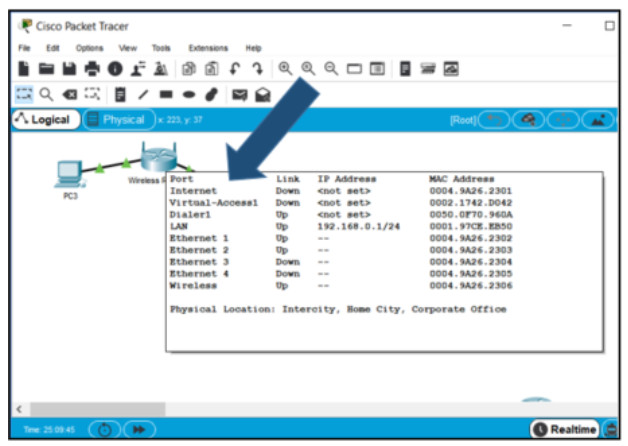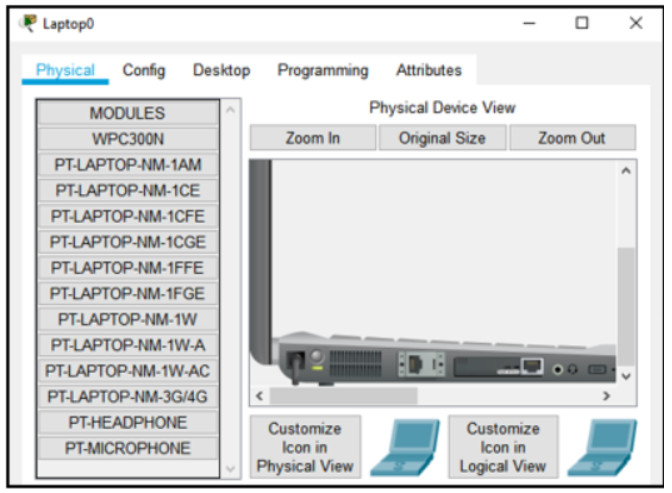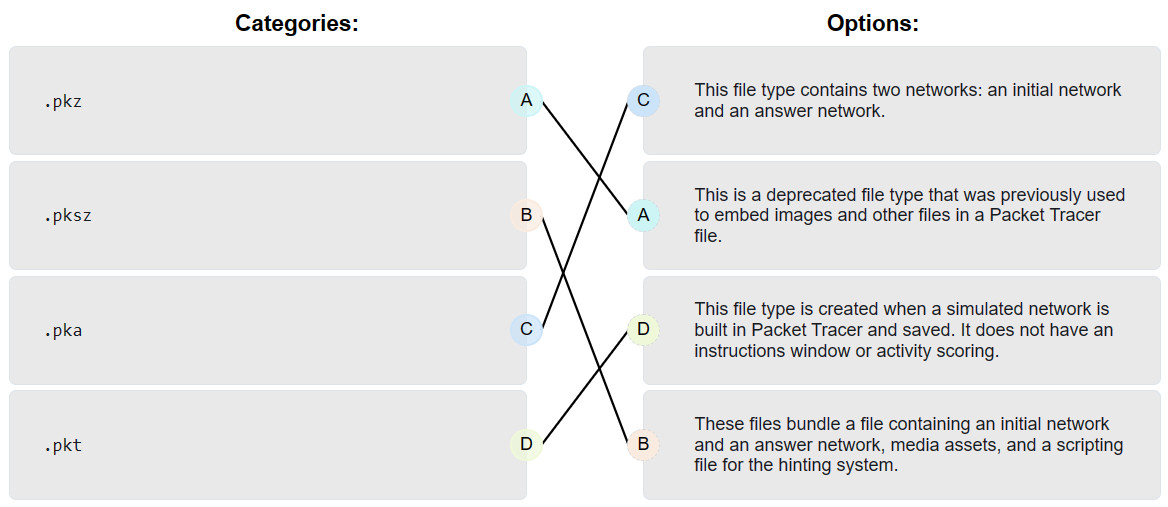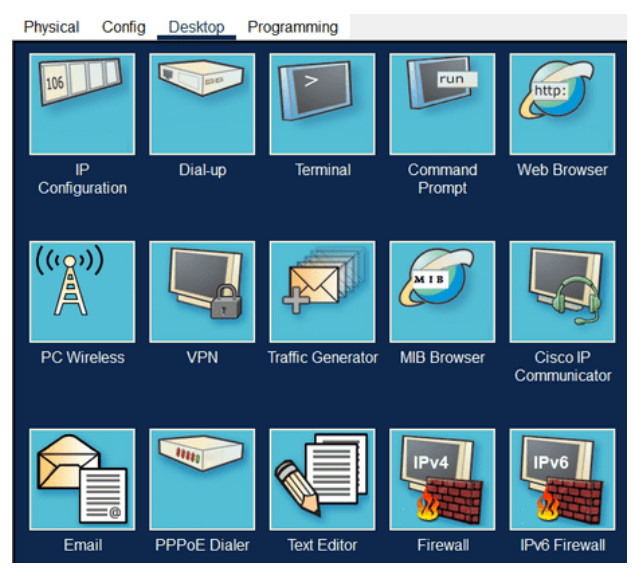1. Which two devices are used to connect IoT devices to a home network? (Choose two.)
- DNS server
- Cisco 2960 switch
- Cisco 2911 router
- registration server
- home gateway
2. Refer to the exhibit. The above icon is in the lower right hand corner of the Packet Tracer screen. What might the person using Packet Tracer be doing?

- creating a new network
- adding a city view as a background
- testing connectivity by using simple or complex PDUs
- deleting components from an existing network
3. Refer to the exhibit. How do you display the popup window to show the additional device information?

- Choose File > device info popup
- Double-click the device icon.
- Hover the cursor over the device icon.
- Right-click the device to select detailed information.
4. Refer to the exhibit. A student has started a Packet Tracer network that includes a home wireless router to be used for both wired and wireless devices. The router and laptop have been placed within the logical workspace. The student clicks on the laptop and the window that opens is shown in the exhibit. What is the purpose of the modules on the left?

- These are optional modules that can be installed into the module slot if it is currently empty.
- These are modules that can be used by double-clicking on one module so that it automatically installs into the laptop.
- This is the list of modules currently installed in the laptop.
- This is a list of modules available from the manufacturer that can be clicked on and purchased.
5. Refer to the exhibit. Which menu item would be used to bring up a web browser?

- Config
- Desktop
- Programming
- Attributes
- Physical
6. Refer to the exhibit. Which network device is being configured within Packet Tracer?

- home wireless router
- laptop
- PC
- switch
7. Match the file types to the appropriate description.

8. A Packet Tracer exercise requires that you organize all cables using a structured cabling approach. What mode in Packet Tracer will allow you to accomplish this task?
- Realtime Mode
- Physical Mode
- Simulation Mode
- Logical Mode
9. What is the purpose of simulation mode?
- to view the contents of PDUs to verify connectivity, functionality, and troubleshoot issues
- to provide access to preferences such as displaying device names
- to view a physical representation of networking equipment
- to organize the wiring closest using structured cabling
10. A Packet Tracer lab requires that you cluster some devices. What mode is required to create or modify clusters?
- Physical Mode
- Simulation Mode
- Realtime Mode
- Logical Mode
11. You have set up a smart house in Packet Tracer with many IoT devices including a garage door and indoor lights. What happens if you position the cursor on the garage door and select Alt + Click?
- The specifications of the garage door will display.
- The garage door will be associated with the home gateway.
- The garage door will open.
- The garage door will be removed.
12. A smart home design requires the use of an IoT device called a smoke detector. You add the device but you need information about the features and usage of this device. How would you get that information?
- Select the device and select the specifications tab.
- Select the device and select the physical tab.
- Select the device and select ALT + Click.
- Select the device and select the config tab.
13. In Packet Tracer, there is an area that has a set of modifiable environmental controls that can be used to test IoT devices. What is this area called?
- a network
- a cluster
- a registration server
- a container
14. You are creating a new “Thing” for a smart home design. The instructions state that you require two graphics for your new “Thing”. Why are two graphics required?
- one for the PT Home IOT devices tab and one for documentation
- one for the smart home location and one for the registration server connection
- one to represent a beginning state and one to represent the end state
- one for the primary location within the smart home and a second for another location
15. Refer to the exhibit. From a laptop, which desktop icon is required to allow you to configure a switch using CLI commands?

- Command Prompt
- Web Browser
- Terminal
- PC Wireless
